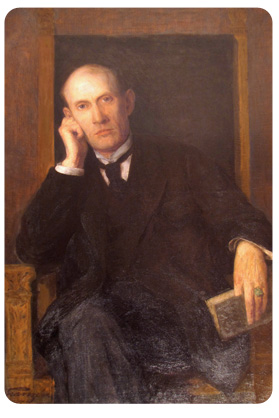 |
 |
||||||
 |
|||||||
 |
|||||||
Portrait Description Finding Joy and Humor Stories abound about how Eugene always tried to find joy in life. He once wrote an article for a local grocer who pestered him for free advertising; the article offered free melons to the community, something of a surprise for the importunate grocer, who resolved to pay for advertising in the future. A more personal example of Field’s humor relates to the nicknames he gave his children – four boys and two girls. Mary French Field, the eldest, became “Trotty” and son Frederick was “Daisy.” Eugene Field was not a straight-laced, Victorian gentleman—he found ways to make others laugh. The Children’s Poet, Famous Journalist, and Commentator In journalism, Eugene Field was an innovator. He is known as the father of the personal column. With his “Sharps and Flats,” Field said that the Chicago Daily News allowed him to write “exactly what I please on any subject I please.” Field was one of the first journalists to use satire in his written political commentary, separating him from other political satirists who primarily used cartoons. Field’s commentary was not always welcome; his editors attempted to cap his freedom. Field responded with his poem “The Ahkoond of Swat,” referencing the fluff he was forced to write. Eugene Field left a lasting impression on both poets and journalists, not to mention all those that knew him. He died in his sleep on November 4, 1895, at the age of forty-five. |
|
||||||
| About Us | Partners | Press Room | Donate | Site Map | Contact ©2010 Urban Museum Collaborative |
|||||||
